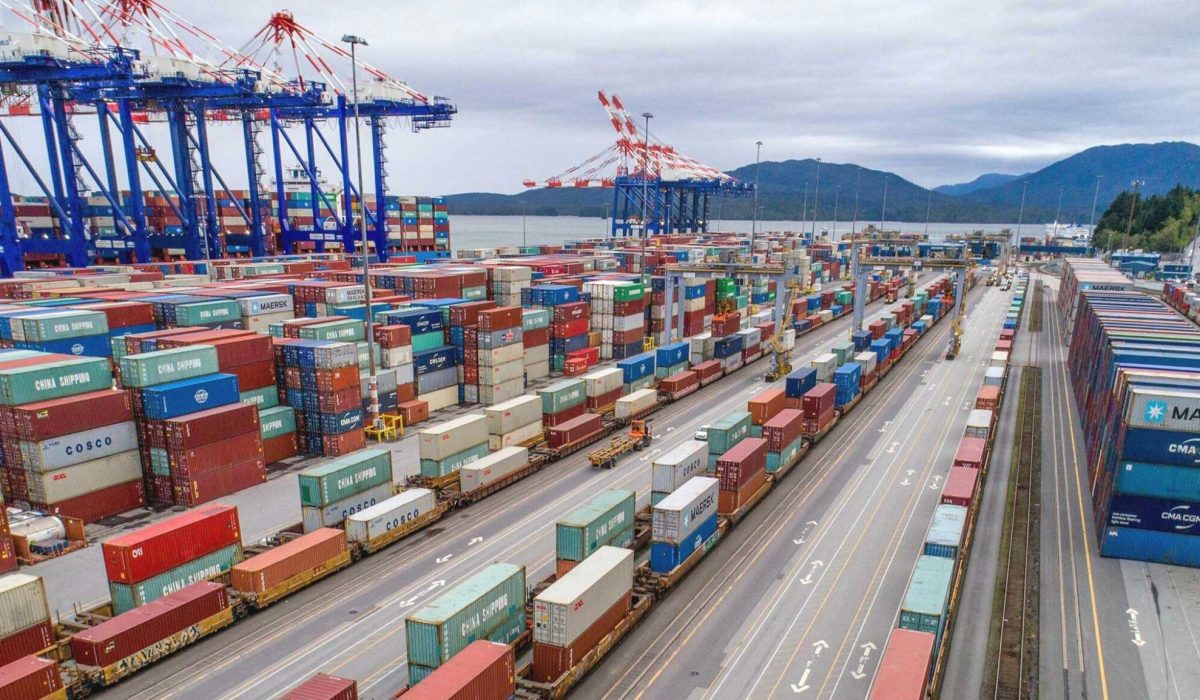Historic shutdown of CN and CPKC would leave shippers with few options, put pressure on trucking rates
Logistics providers warned the historic shutdown of Canada’s two largest railroads would have a seismic effect on the cross-border supply chain as shippers search for alternative transportation.
Both Canadian National and Canadian Pacific Kansas City have set a deadline of early Thursday to lock out workers, barring agreement on a new contract with the Teamsters union. The union also warned of its intent to walk off the job, marking the first time Canada’s largest railroads would both idle operations. A shutdown would leave cross-border shippers and their customers in limbo for delivery of freight ranging from intermodal containers to grain, lumber and perishable food products.
“If the railroad starts locking out workers this week and there is a subsequent strike, operations will grind to a halt and everything will have to move to the road for both domestic and international containerized freight,” said Paul Brashier, vice president of global supply chain, ITS Logistics, based in Reno, Nevada, in a statement. “When/if this happens, it will drive [trucking] rates through the roof overnight, if capacity can be obtained at all.”
In its August U.S. Port/Rail Ramp Freight Index, ITS rated as “severe” port container and dray operations throughout the west coast of North America. It offered the same forecast for ocean/domestic rail ramp operations throughout the U.S.
Brashier said that even the potential for rail disruption will affect the west coast and inland rail legs of ocean container traffic entering Canada.
“The west coast is seeing an increase in volume due to reroutes to avoid strikes in Canada and [potential] labor disruption on the U.S. East Coast. Trans-Pacific spot rates to the North American west coast are also less expensive and quicker than routing to the Gulf and East Coast, which also may have something to do with the increased volume.”
Despite the railroads’ phased embargoes, logistics providers are bracing for the effects of a shutdown.
“Both railroads simultaneously being out of commission would paralyze the ports and put instant pressure on trucking,” said Scott Shannon, vice president of Canada for C.H. Robinson Worldwide, headquartered in Eden Prairie, Minnesota. “Railroads are like an outdoor conveyor belt that never stops running. They’re designed to operate 24/7, not stop and start, so they can’t just flip a switch at midnight. They need to be finished shutting down at midnight [Wednesday].”
While some trains will be forced to stop short of their destinations, there is actually some reason for optimism.
“Any export freight from Canadian or U.S. shippers that is still able to get switched into a Canadian port can still ship out – even after a strike or lockout begins – because port labor rather than railroad labor unloads at the dock,” said Shannon. “Any import freight coming into Canada’s western ports from Asia or into eastern ports from Europe can get unloaded onto any trains parked there. The trains just wouldn’t move. Or we can come into the port to pick it up with trucks.”
Shannon said Robinson’s automotive customers rely on manufacturing centers in Mexico to serve their entire North American supply chain. “If a strike happens, cargo already en route to Canada from Mexico would get held at the border or at a rail yard along the way.”
Canadian ports that rely on rail for much of their tonnage are a critical link for many U.S. exporters.
“Speed is one reason many U.S. companies, especially those in the Midwest, use Canadian ports for their imports and exports,” Shannon said. “The Port of Vancouver on the Canadian west coast can be faster for ocean service to and from Asia. The Port of Montreal to the east can be faster for shipments from Europe, especially for auto parts destined for the Detroit area and for things like imported food and beverages headed to retailers in Chicago and the rest of the Upper Midwest.”
Robinson has been diverting U.S. customers’ ocean cargo away from Canadian ports as far back as May, following the first union strike vote. Shannon said approximately 80% of the customers who switched are now exporting through Los Angeles-Long Beach and the remainder through Seattle-Tacoma. Now, some Canadian exporters are starting to ship time-sensitive goods to ports by truck to avoid containers being stuck at a rail terminal during a strike.
“For imports that could no longer move inland by rail in the event of a strike, we’ve been determining for customers which to terminate at Canadian ports and truck from there, versus redirecting to U.S. ports like New York/New Jersey and trucking from there. Cargo destined for the Toronto area could even come in through the Port of Boston.”
Robinson has transloading facilities in every major port city in North America, and Shannon said shippers who already have cargo on the water can have it picked up at the port and transloaded to trucks. Transloading also enables shipments to be broken down and efficiently routed directly to their destinations, instead of to a customer’s distribution center.


